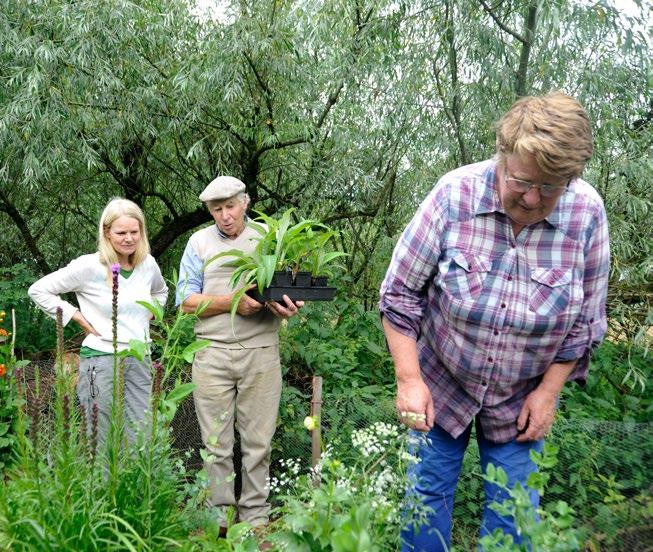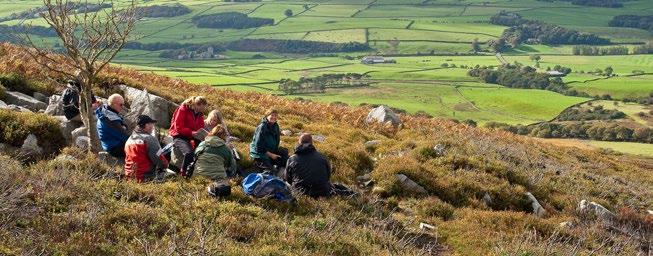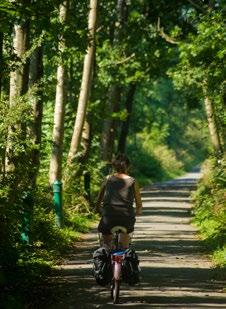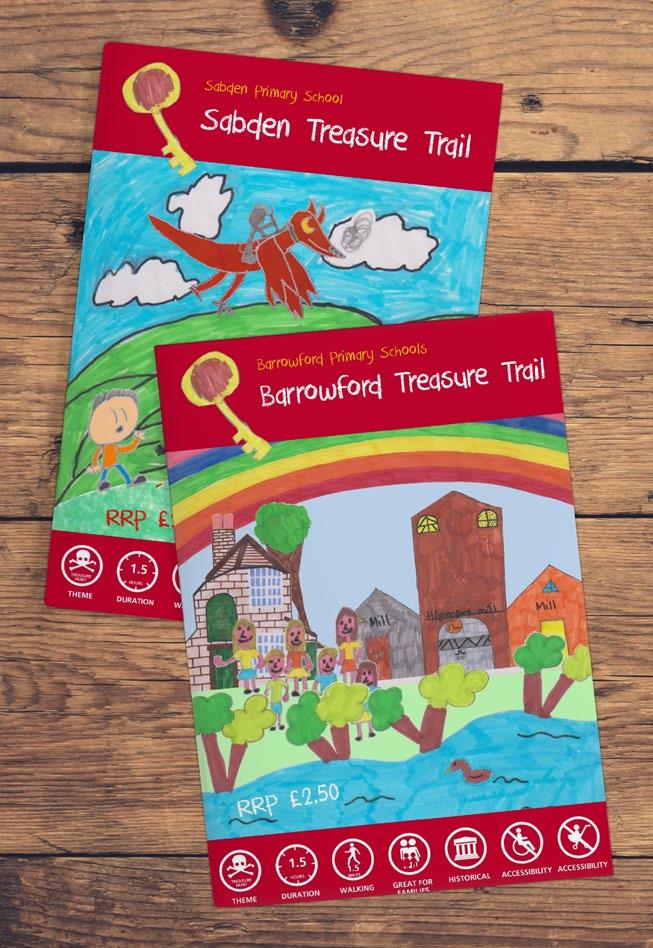
2 minute read
Margaret Breaks
by Hetty Byrne
Margaret’s ‘Adopted’ Seedlings Ensure Bowland’s Wild Flowers Are Blooming
A committed group of green-fingered foster carers is nurturing vulnerable plant species in their own gardens to help regenerate wildflower meadows
Advertisement
Hay Time Rescue is a new project funded jointly by Lancashire Environmental fund, Yorkshire dales Millennium Trust and Forest of Bowland AONB.
By harnessing the support of farmers, land owners and volunteer ‘foster carers’, the project aims to bolster the population of some of the scarcer plant species in the Forest of Bowland by ‘rescuing’ seeds and extending and managing the areas where they are currently found.
The work is focussed in the species-rich hay meadows and pastures – such as the Coronation meadows at Bell Sykes Farm in Slaidburn. Focus species include bird’s eye primrose Primula farinosa, globe flower Trolllius europaeus, melancholy thistle Cirsium heterophyllum and saw wort Serratula tinctoria. Margaret Breaks
Seed is collected from sustainable local populations and together with the resources at Kew Millennium Seed Bank, local volunteers propagate and foster the seeds into plug plants, which are then transplanted into suitable sites across the AONB.
Margaret Breaks is one of several ‘foster carers’ who grows plug plants for the scheme at her farm above Newtonin-Bowland. Margaret specialises in globe flowers, which love slightly damp, boggy corners of her fields. “It took us a while to get the hang of it, but this year, the seedlings have really taken off and we’ve grown about 50 really strong plants from scratch,” said Margaret. “It’s great to be able to put something back into the environment. Someone has to stick up for nature and step in to stop species loss and we’re
lucky in Bowland that we still have some traditional wildflower meadows to enjoy. “By working together with local landowners and literally getting stuck in and getting our hands dirty, we are hoping to have quite a profound impact on the local landscape, by ensuring that these endangered species are able to thrive in the meadows where local farmers are encouraging their regeneration.” Haytime Rescue Project officer Carol Edmondson said: “Local knowledge is key to the project: from identifying the local sustainable populations, to the help from Lancashire Environmental Record Network and local botany groups enabling us to gain a fuller picture of the species distribution, their decline, and hopefully a list of additional re-introduction sites at historically recorded locations. “This year more than 10 hectares of species poor meadows have begun their transformation into beautiful wildflower-rich hay meadows. Over the past eight years more than 300 acres across 65 sites of semi-improved grassland have undergone some restoration work: either in the form of green hay from the SSSI meadows, seed, or plug plant addition, continuing to extend this important wildlife resource and visual asset across the AONB landscape.”











